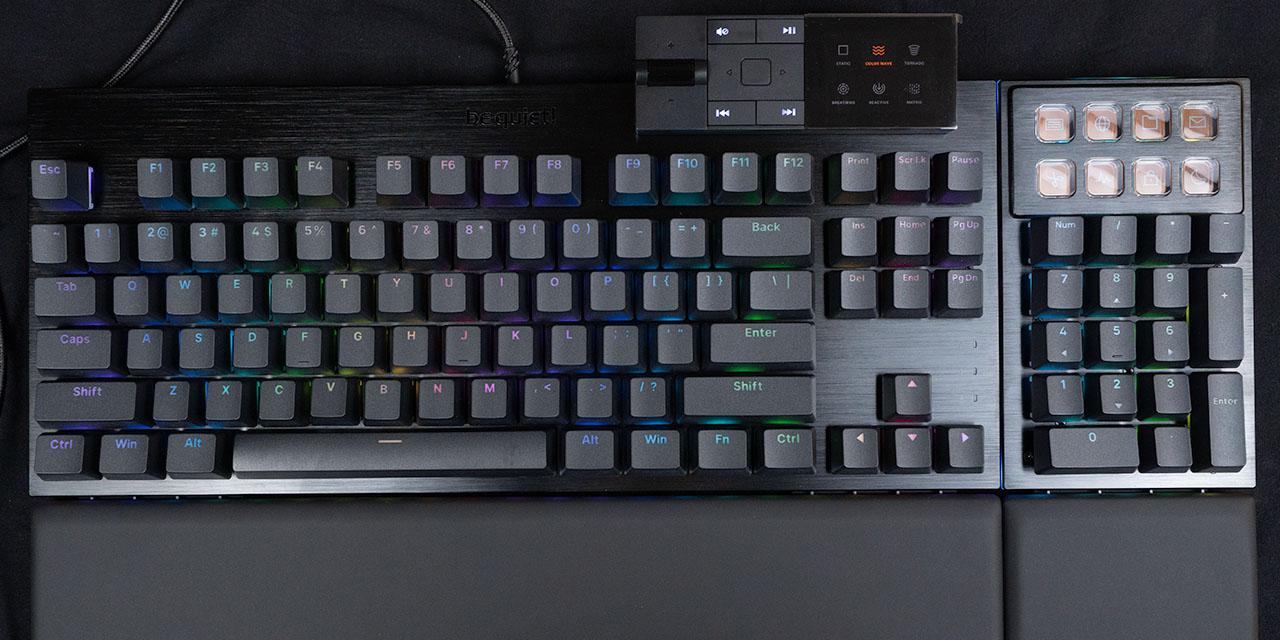Page 2 - Physical Look - Outside
The first thing I noticed about the Thermaltake Toughpower GF1 1000W power supply was how ventilated it is. Slits of equal lengths in a running bond pattern are present on four of the six slides of the enclosure for maximum airflow, shown in my photo above. The matte black surface keeps the PSU subtle but not generic. Meanwhile, the Thermaltake Toughpower GF1 1000W has a depth of only 16.0cm, which is short for a kilowatt-spec unit and is among the shortest power supplies we have reviewed here in APH Networks. Most modular power supplies are longer than non-modular units by a centimeter or two, as the extra length is needed to accommodate its connector board at the back. We will take a look inside the PSU on the next page. For most ATX or eATX chassis, length should not be much of a problem, if at all. However, if you have a mATX or mITX case that takes standard power supplies, the shorter length will definitely serve as an advantage, especially considering the fact the Toughpower GF1 is fully modular.
From our view above, Thermaltake's logo is located dead center on the slit mesh fan grille, which itself is located in the middle of this side of the enclosure. The sticker with the same design is implemented on both the left and right side, where you can spot the Toughpower GF1 1000W branding prominently placed. To make sure you will see the text right side up at all times, the orientation of it is different on both sides, so whatever side facing the user after installation will always be correct. Its SECC construction comes with a fixed grille guarding the primary and only cooling fan installed. The 140mm fan generates airflow by drawing air from the bottom of the power supply over its internal components to keep the temperatures in check. Exhaust heat is allowed to leave at the back of the power supply through the large secondary slit mesh opening. Meanwhile, six screws secure the power supply case together. One screw has a warranty seal over it, so you cannot open the Thermaltake Toughpower GF1 1000W without voiding its 10-year warranty.
Starting from the back part of the power supply, we have the slit pattern grille design as aforementioned; what you will find here is a horizontally aligned male connector for power input on the western edge along with an on/off switch and another rocker switch to toggle Smart Zero Fan next to it. I find having the Smart Zero Fan switch here to be convenient, since some older power supplies have it on the inside rather than the outside. However, I do not see a reason why you will not leave Smart Zero Fan on. Smart Zero Fan keeps the fan off until it exceeds about 30% of the load threshold. Disabling Smart Zero Fan ensures the fan stays on at all times, but the Thermaltake Toughpower GF1 1000W is intelligently designed to keep it from overheating regardless of what the active setting is.
The slit mesh design is implemented to maximize airflow and minimize air resistance. This is done as heat needs to leave the power supply as easily and efficiently as possible, because the Toughpower GF1 1000W incorporates only one 140mm fan at the bottom. It is implemented in an efficient manner, as the power input block takes up only the minimum necessary amount of room physically required. As with all active PFC power supplies, the Thermaltake Toughpower GF1 1000W has an automatic full range 100V to 240V AC line voltage selection, so the user does not have to worry about manually selecting input voltage.
Like many power supplies we cover here at APH Networks, the Toughpower GF1 1000W is a fully modular power supply. This means all cables are completely detachable from the main unit. While it is somewhat questionable with regards to why this is necessary, since cables such as the ATX 24-pin and ATX 4-pin/EPS 8-pin have practically an 100% chance of being connected at all times, it may prove to be beneficial to an extent when building your computer initially.
The rear cable connection panel is done nicely. Thermaltake has made the labels upside-down in standard orientation. Similar connectors are grouped together and are laid out in a very logical manner. To ensure you know what is going on, they are all grouped and clearly labeled for minimal ambiguity. Starting from the left, we have a motherboard 24-pin split into two blocks on top of each other. Immediately below and to the right of that are five ATX/EPS 4+4 pin or PCI Express connectors. Finally, there are four peripheral headers for Molex and SATA peripherals. Incompatible outputs will not physically fit into each other, so Thermaltake has done a great job in this regard. This is a reasonable array of outputs in correspondence number of connectors on each modular cable, which should be sufficient for casual users and power enthusiasts alike.
The external build quality of Thermaltake's Toughpower GF1 1000W power supply is excellent as always; a good indication the company is serious about the product they are selling. We will take it apart in just a moment. Fit is done well with minimal panel gaps and all edges are nicely finished off. The level of refinement with regards to the external build quality is right up there with all the other high-quality PSUs I have used in the past. As aforementioned, we will crack open the power supply to see what components are inside in the following section.
The voltage specification label is located on the top panel of the Toughpower GF1 1000W. There are two main virtual rails. Up to 24A can be delivered via the +3.3V rail for a total of 79.2W, while the 24A on the +5V rail brings the output to 120W in this area. The total combined output for the +3.3V and +5V rail is 120W. In other words, your power allocation combination must fall within the limits of the listed specifications. Meanwhile, a single powerful +12V rail delivers up to 83.3A -- 1000W -- to maximize power delivery flexibility compared to multiple rails. Overall, the combined power output for the whole Thermaltake Toughpower GF1 1000W is... well, 1000W haha. It does sound a bit confusing to understand how this works at first, but generally speaking, this configuration allows sufficiently flexible power demands and should be sufficient to accommodate most users. I have seen lower power outputs in the +3.3V and 5V rails for higher output rated units. The overall distribution is very reasonable for a 1000W power supply.
The Thermaltake Toughpower GF1 1000W is 80 Plus Gold certified, which means that it is certified to be at least 87%, 90%, 87% efficient at 20%, 50%, and 100% load, respectively. Higher certifications available for power supplies of this type include 80 Plus Platinum and 80 Plus Titanium at press time.
A total of ten modular cables are included out of the box. All modular cables are flat and easy to bend, making them extremely easy to work with. The wires are not labeled, but from a visual inspection, it looks like the high current PCI Express and ATX/EPS connectors are 16 AWG with the rest 18 AWG. Manufacturers often will fatten high current cables to 16 AWG, so this is common practice.
The following modular cables are included out of the box:
- 1x ATX 20+4 pin, 60.0cm
- 1x ATX 4+4 pin, 70.0cm
- 1x EPS 8 pin, 70.0cm
- 3x PCIe 6+2 pin, 2 connectors each, 50.0cm to first connector, 12.0cm spacing thereafter
- 3x SATA, 4 connectors each, 50.0cm to first connector, 15.0cm spacing thereafter
- 1x Molex, 4 connectors, 50.0cm to first connector, 15.0cm spacing thereafter
These figures are based on my measurements. There is also a 15cm Molex to floppy adapter in case anyone still needs it. Most users should have no problems with Thermaltake's Toughpower GF1 1000W in modern cases. 50cm is the general standard, and the included cables met or exceeded this recommendation on all measurements.
Page Index
1. Introduction, Packaging, Specifications
2. Physical Look - Outside
3. Physical Look - Inside
4. Minor Tests and Conclusion





